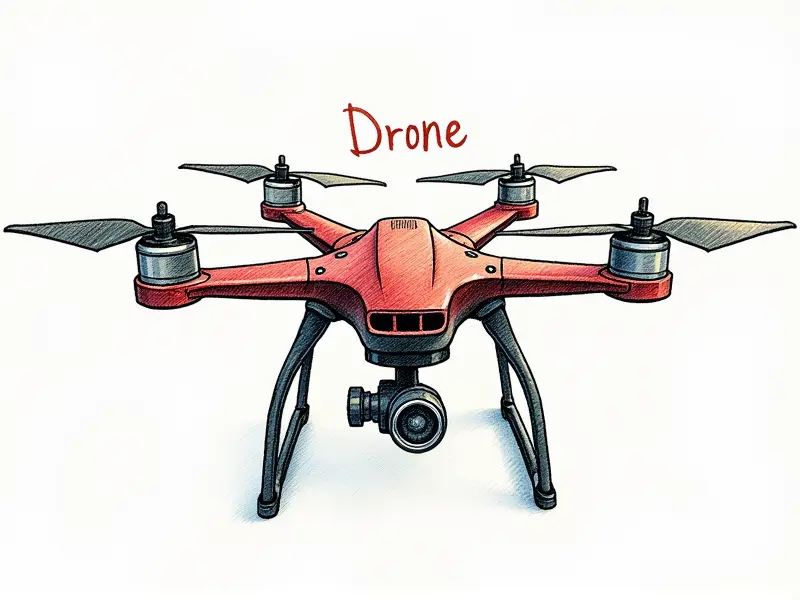Is DJI Phantom waterproof?

Is DJI Phantom Drone Waterproof?
The question of whether the DJI Phantom drone is waterproof or not often arises among hobbyists and professionals alike. This article aims to provide a comprehensive answer, covering various aspects related to water resistance and protection for your DJI Phantom.
Can DJI Phantom Fly in Rain?
Flying a DJI Phantom in the rain can be tempting when you want to capture unique weather conditions or avoid crowds. However, it's crucial to understand that the DJI Phantom is not designed to withstand prolonged exposure to water and should not be flown in heavy rain.
DJI Phantom: Splashproof or Waterproof?
The term "waterproof" implies complete protection against water damage, whereas "splashproof" indicates some level of resistance to incidental contact with water. The DJI Phantom is splashproof but not waterproof. This means it can handle minor splashes and brief exposure to light rain but should be protected from prolonged wet conditions.
Testing DJI Phantom's Water Tolerance
To test the water tolerance of your DJI Phantom, you could conduct a controlled experiment under minimal risk conditions. For instance, exposing it to small amounts of water and observing its performance can give insights into how well it handles moisture. However, such tests should be done with caution and without risking damage.
Protecting Your DJI Phantom from Water
To safeguard your DJI Phantom against water damage, consider using protective gear like waterproof drone cases or covers designed specifically for drones. Additionally, keeping the drone dry before and after flights is essential to maintain its functionality.
Tips for Protection
- Use a waterproof case when transporting the drone.
- Cover the drone with a protective wrap during storage.
- Dry off any moisture immediately after exposure.
Flying DJI Phantom in Light Rain
In light rain, flying your DJI Phantom might seem feasible due to its splashproof nature. However, it's important to assess the intensity of the rainfall and ensure that no significant water enters the drone’s electronics or motors.
Precautions
- Avoid prolonged exposure in wet conditions.
- Monitor weather forecasts before flying.
- Use a protective cover if possible.
DJI Phantom's Ingress Protection Rating (IP Rating)
The DJI Phantom does not have an official IP rating, which would provide specific details about its water and dust resistance. However, the manufacturer’s guidelines suggest that it is designed to handle minor splashes but should be kept away from direct exposure to rain.
Understanding IP Ratings
- IPX1-2: Protection against vertically falling drops of water.
- IPX4-5: Protection against splashing water and water jets from all directions.
How to Make DJI Phantom Waterproof
Making your DJI Phantom waterproof is not feasible due to its design limitations. However, you can enhance its protection by using external accessories such as:
- Waterproof Covers: These covers are designed to protect the drone from water and dust.
- Dry Bags: Use dry bags for storing your drone when not in use, especially during travel.
Can You Fly DJI Phantom in Wet Weather?
Flying your DJI Phantom in wet weather is risky and generally discouraged. The drone's splashproof nature means it can handle minor moisture but cannot withstand heavy rain or prolonged exposure to water.
Safety Measures
- Check the forecast before flying.
- Avoid flying if there’s a chance of rain.
- Keep your drone dry and protected at all times.
DJI Phantom: Safe for Splashy Conditions?
The DJI Phantom is safe in splashy conditions but not under heavy rainfall or prolonged exposure to water. It can handle minor splashes, such as those encountered during a light drizzle or when landing near water bodies.
Safe Practices
- Avoid flying over large bodies of water.
- Be cautious around wet grass and muddy terrain.
DJI Phantom's Water Protection Features
The DJI Phantom includes several features designed to protect it from moisture:
- Splashproof Design: The exterior is treated with a protective coating that helps resist minor water exposure.
- Sealed Components: Certain critical components are sealed to prevent water ingress.
Maintaining Water Protection
- Clean and dry the drone after each use.
- Inspect seals and protective coatings regularly for wear and tear.
Conclusion
The DJI Phantom is splashproof, meaning it can handle minor water exposure but should not be flown in heavy rain or left exposed to prolonged wet conditions. To ensure your drone remains functional and protected, use appropriate accessories like waterproof covers and dry bags, and follow best practices for handling and storage.

